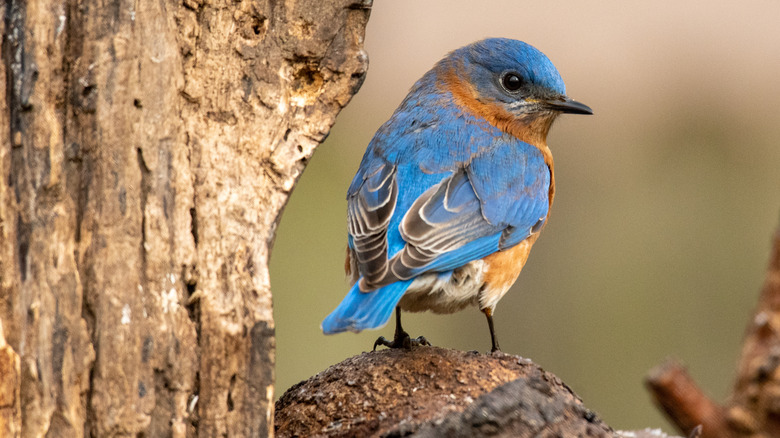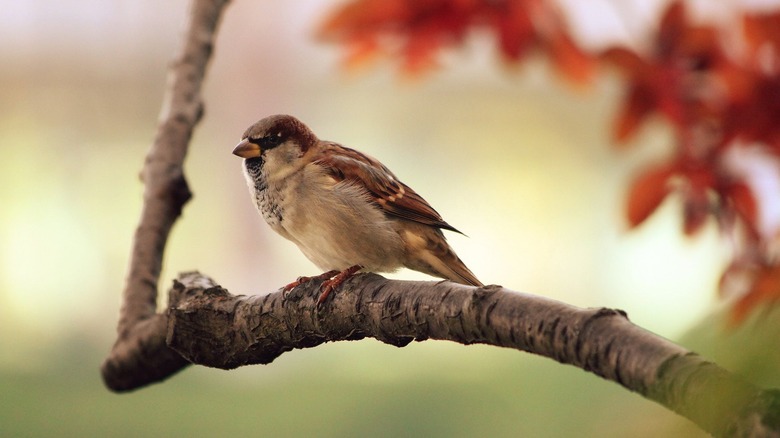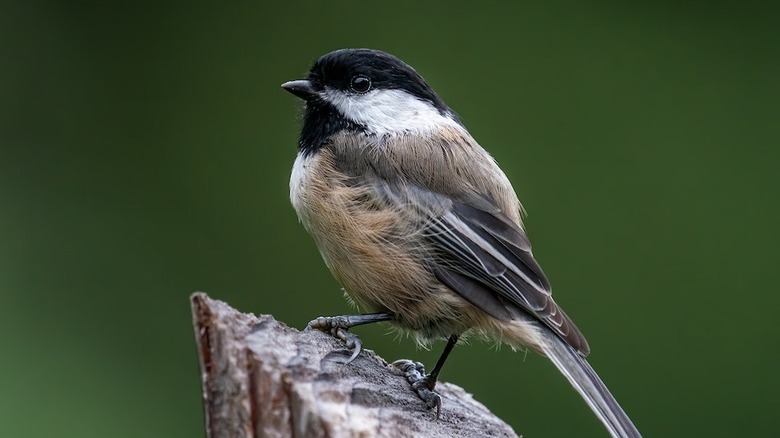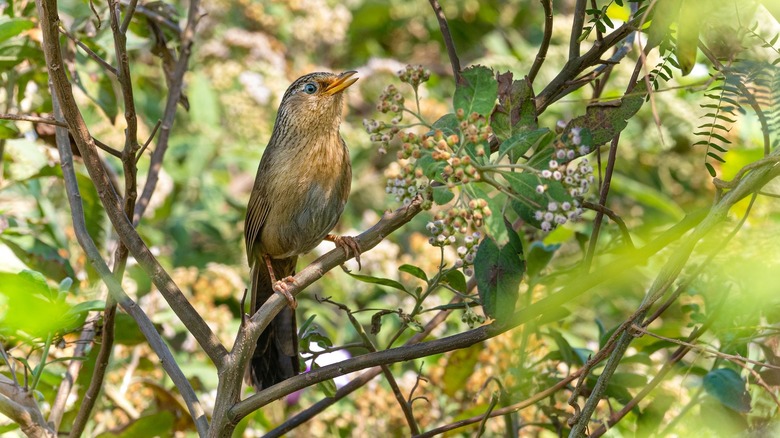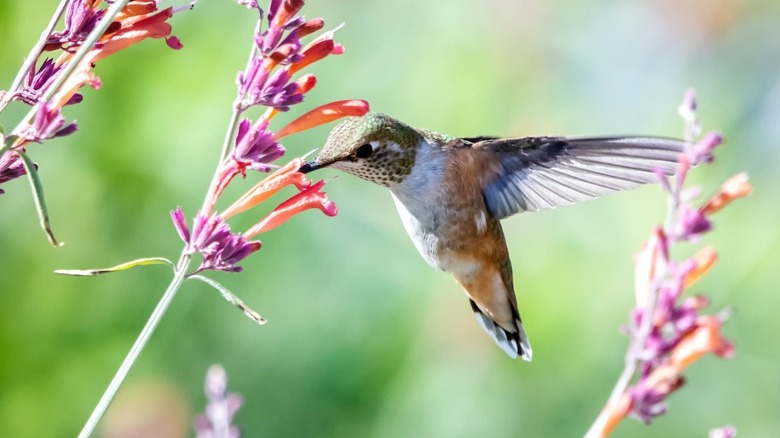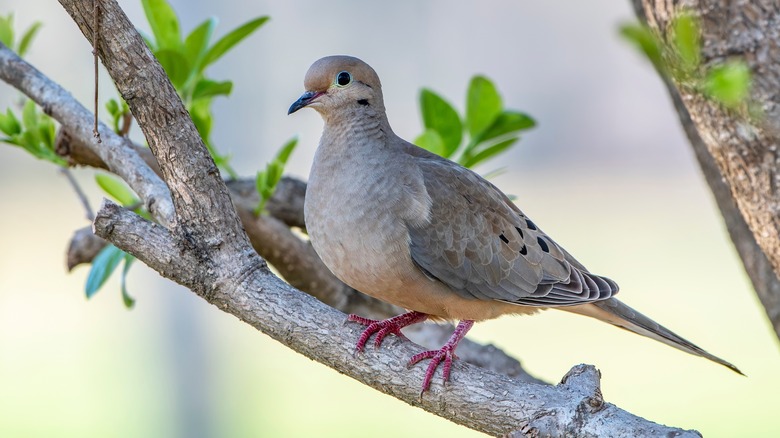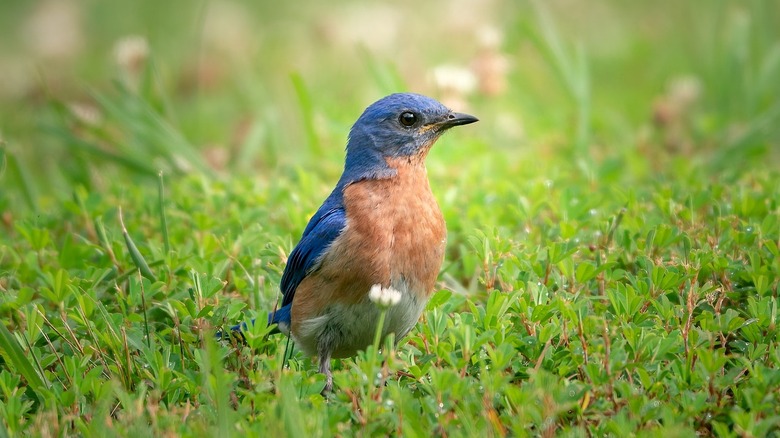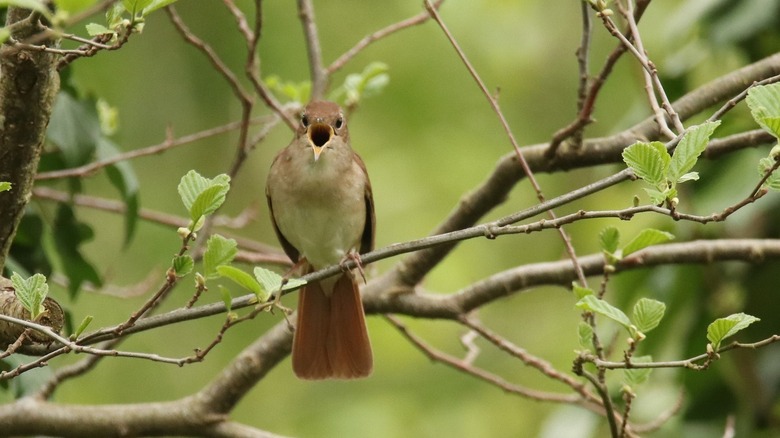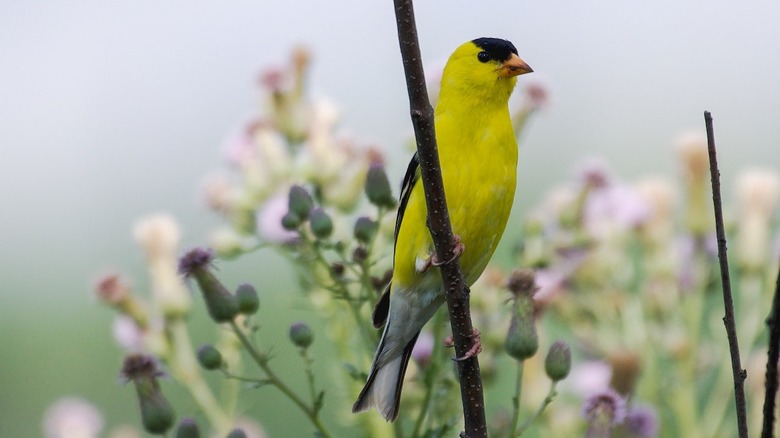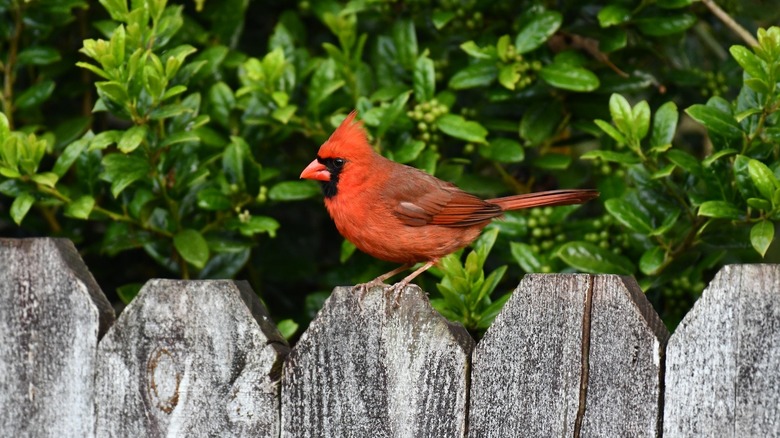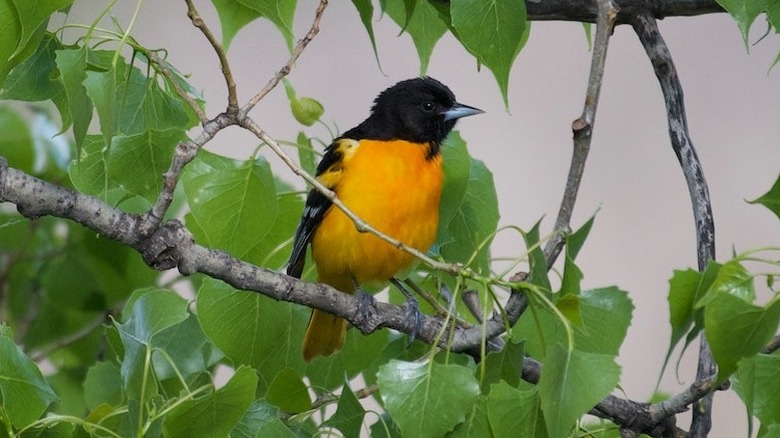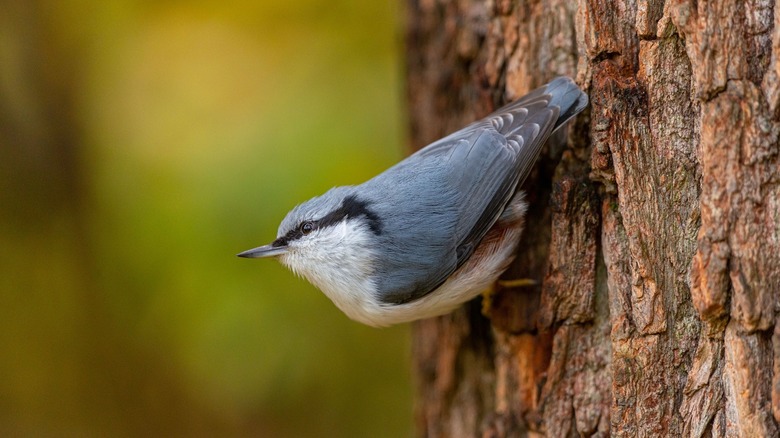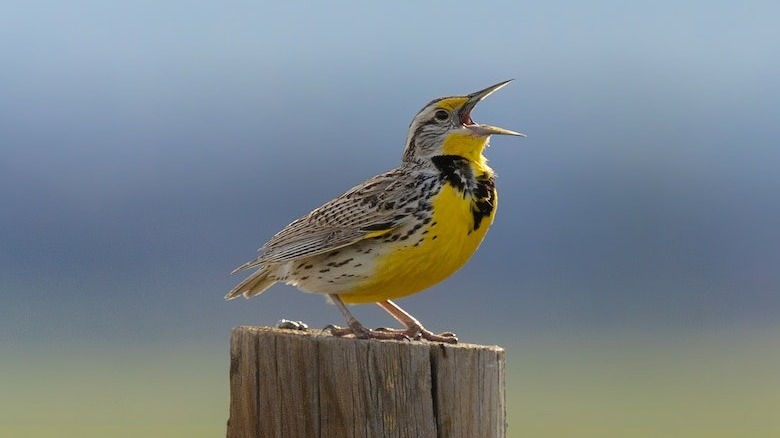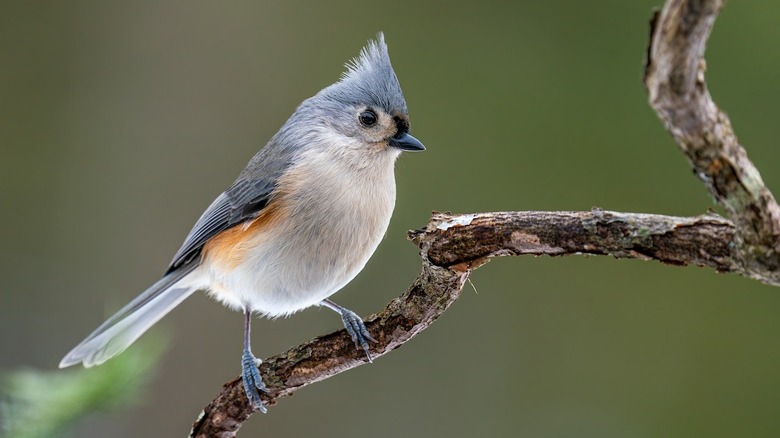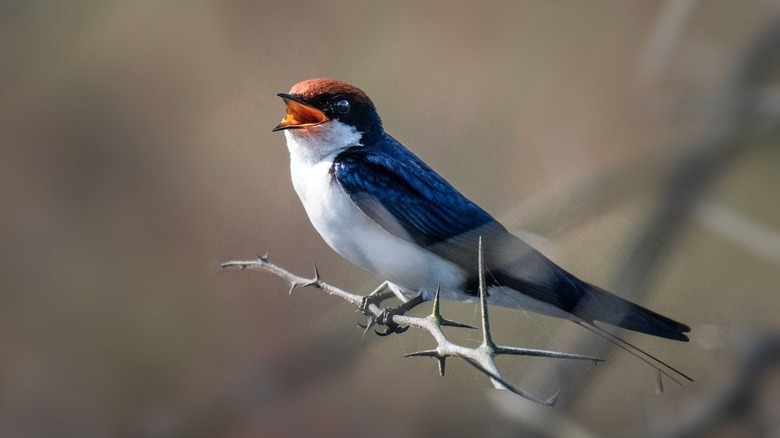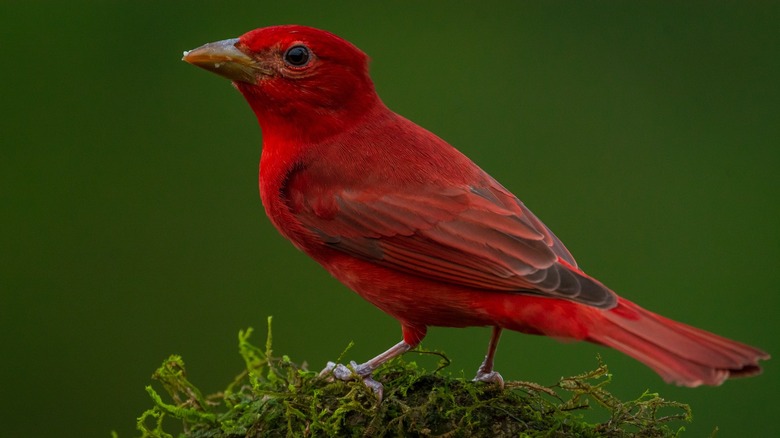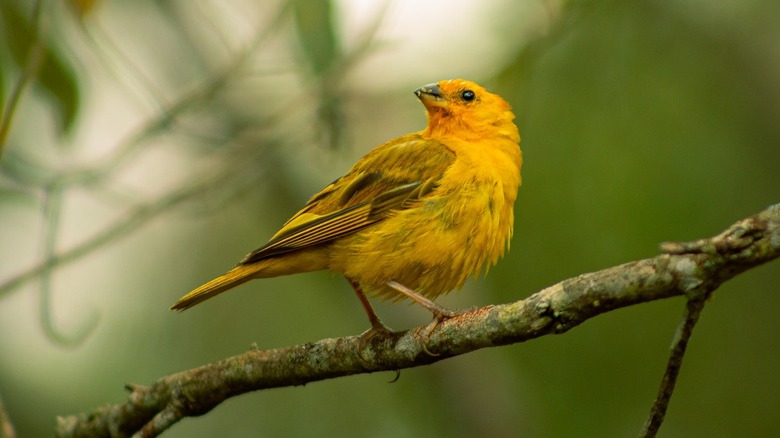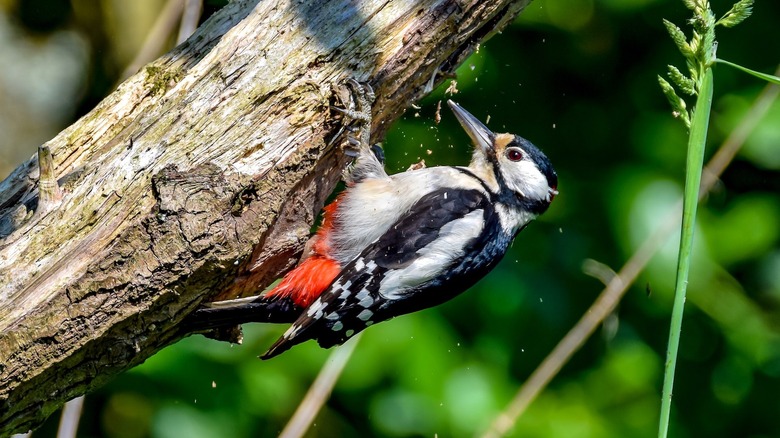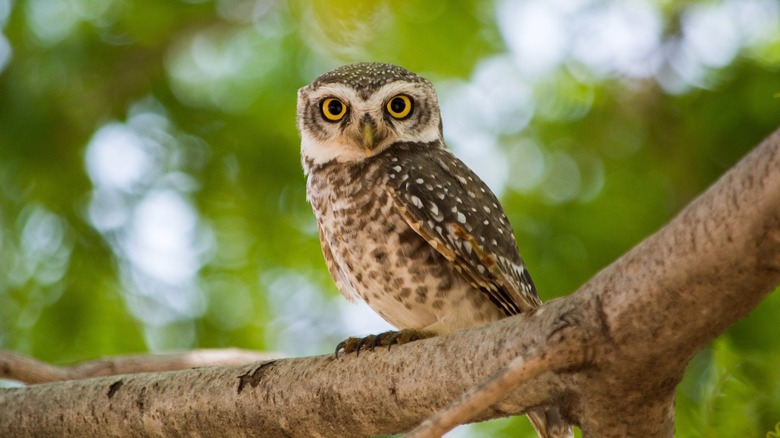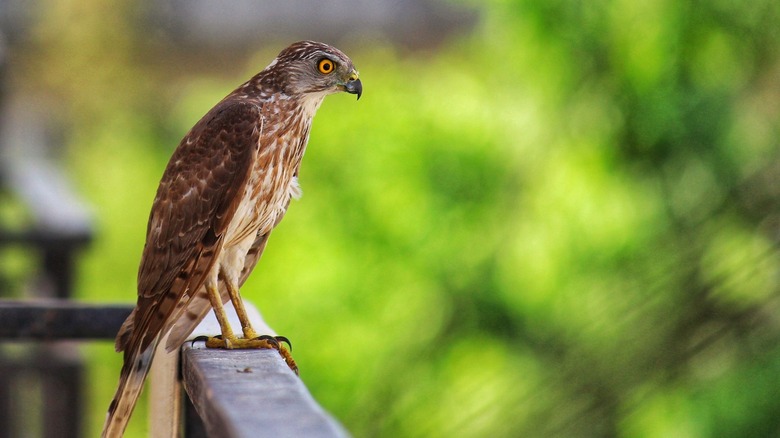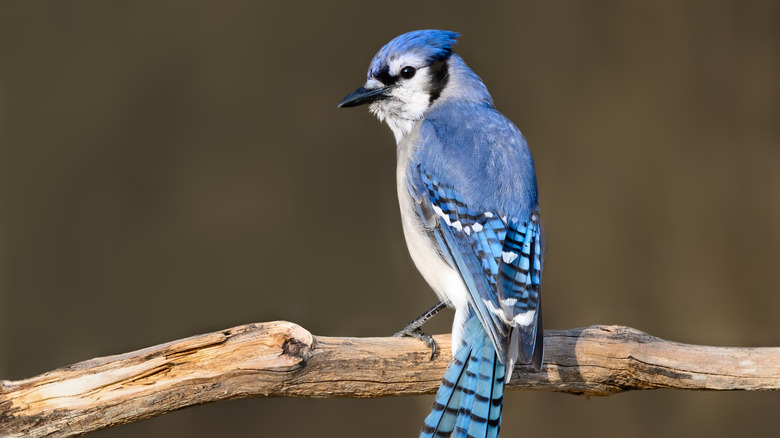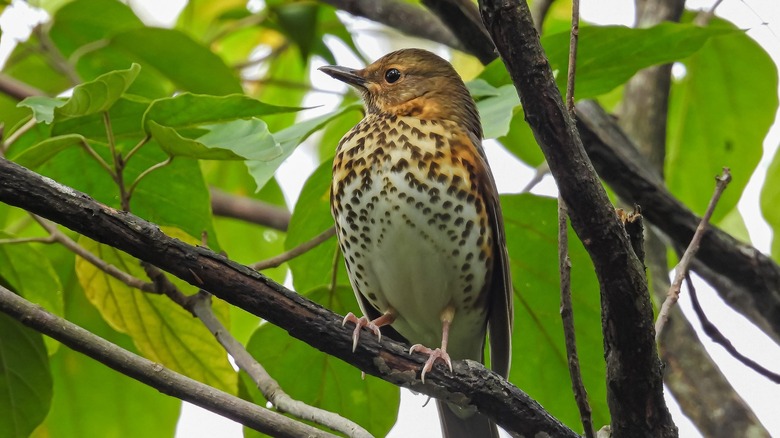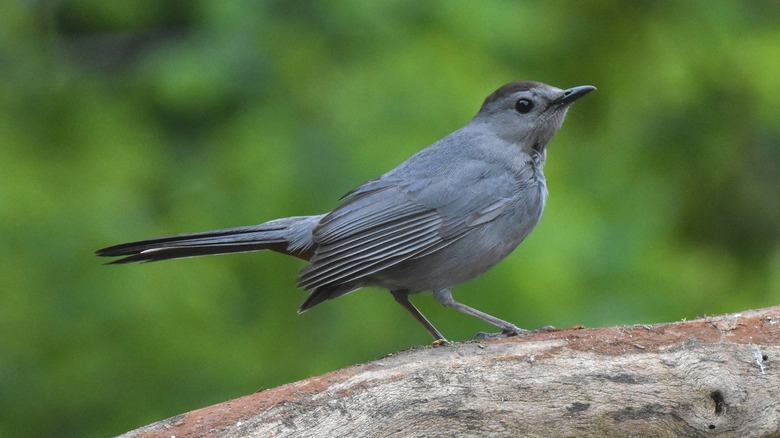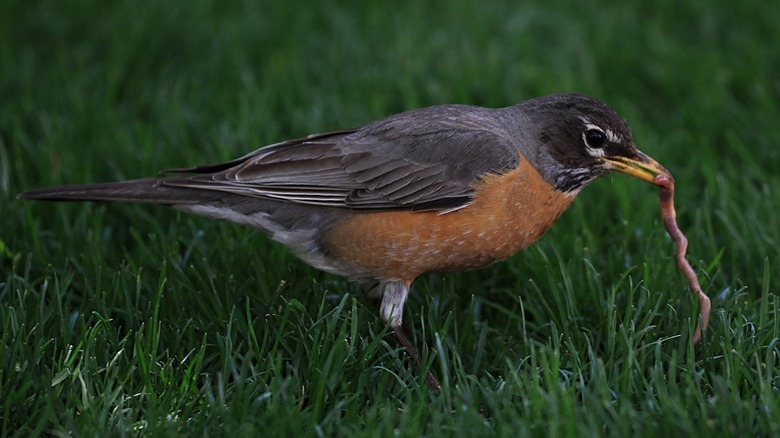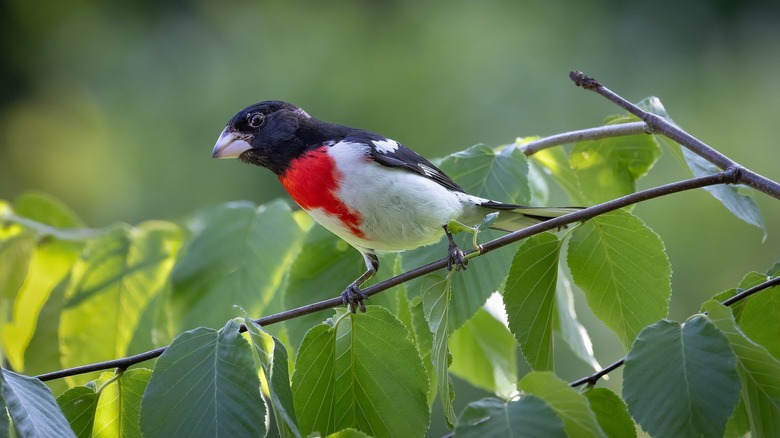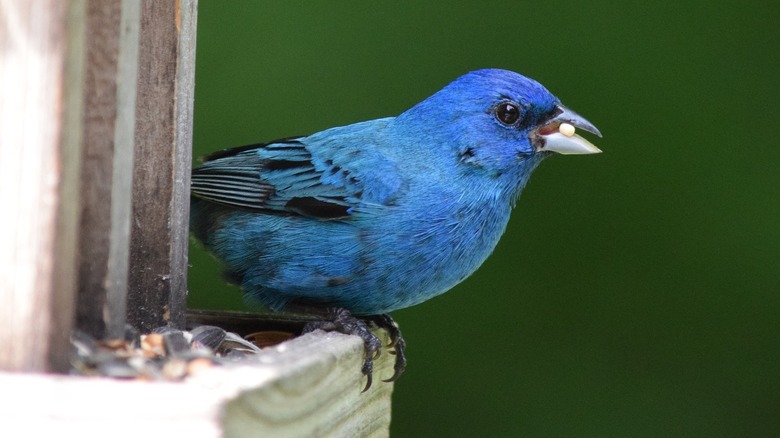The Types Of Birds You Will Want In Your Yard
Before you start eagerly indulging in ways to attract birds to your yard, you should be aware of what kind of flying friends you want to stop by on a regular basis or even move into your neighborhood. There are myriad reasons why you may be interested in having birds around, including wanting to offer them a safe source of food and water as well as shelter. At the same time, you should consider what feathery critters can benefit both you and your property.
For instance, you may want certain birds to hang around your yard if they enjoy feeding on garden pests like beetles, earwigs, mosquitoes, moths, and spiders, as the birds can serve as a kind of natural pest control. The same is true of weed-destroying birds that eagerly consume the seeds of weeds. Still, there are other small birds that prefer to nibble on nectar and act as pollinators, helping your garden to thrive in the process, along with the fruit trees in the area. That's not to mention the fact that a yard that attracts birds could potentially increase in value, as well as make your outdoor space a peaceful place to rest in and enjoy.
And so, when designing a backyard space that will attract birds, consider making it an ideal spot for certain types of birds, perhaps starting with some of the birds on our list of 26 beneficial birds you'll want in your yard.
Sparrows
There are various kinds of sparrows that can be found in areas across the United States, which is why it's likely you'll be able to find these birds in your part of the country. If that's the case, then you'll surely want to attract them to your yard so they can have a feast that's worthy of these feathered friends. Eating seeds during the cooler weather, they like to fill up on insects during the warmer months. That means they'll help you deal with ants, beetles, caterpillars, and cicadas, as well as grasshoppers, moths, and spiders.
Chickadees
Although chickadees are relatively fast fliers, which can make them hard to spot, they also have stunning black and white feathers that make them easy to identify. Of course, they also have a song that's just as lovely as their appearance and gives them their name. Along with looking and sounding beautiful, chickadees also eat a range of pests, from aphids and snails to wasps and insect eggs. If you manage to attract a mama chickadee to your yard, then she can build a nest and you might end up with adorable baby birds on your property.
Wrens
Wrens may tend to blend in with their environment thanks to their subtle light brown feathers that can act as camoflauge, however, you may be able to spot them frolicking around your yard due to their adorably feisty nature. You might also see them enjoying dinner as they nab insects around the ground like ants, crickets, flies, leafhoppers, and plenty of other pests. Another bird with a lovely song, it can also be found in many spots across the country where they settle into cozy nooks around your home.
Hummingbirds
Hummingbirds are undeniably teeny-tiny creatures, however, they can have a big impact on your yard. Along with eating little insects like nasty gnats, they're also hardworking pollinators, which means that they can be a key factor in helping flowers, fruits, and vegetables on your property grow and thrive. Of course, you'll also be able to appreciate the fact that hummingbirds have delightfully colorful feathers that shine when hit by the light, along with an adorable ability to hover over flowers in a way that will surely make you smile.
Mourning doves
Though mourning doves may have a sorrowful name, they also have a lovely call that you can hear when each day begins. When they find a spot to sit — perhaps in your yard — they spend time letting out a gentle cooing sound. When you spot them in your yard, you'll also want to be sure to stick around so you can witness them fly away and share their so-called "wing whistle."
Bluebirds
Bluebirds suit their name thanks to their beautiful feathers. With a song that's just as sweet, these are enough reasons to want to attract bluebirds to your property. At the same time, it doesn't hurt that they're another beneficial bird that dines on insects. Although there are three kinds of bluebirds in the United States — the Eastern bluebird, Western bluebird, and Mountain bluebird — only minor aspects set each apart. However, they all like to consume creepy-crawly critters like earthworms, crickets, spiders, and snails, just to name a few. The Eastern bluebird will also eat frogs and lizards if it's tempted.
Common nightingale
Going by a few different names — such as the common nightingale and rufous nightingale — this bird is another special creature that can absolutely belt out its singing voice. At the same time, it's a little difficult to describe what a nightingale sounds like. That's due to the fact that although their songs are faster than their relatives, the thrush nightingale, this musical bird can produce over 1,000 different noises, which you can try to discern yourself once you attract them to your yard. They prefer to perform as the day ends.
Goldfinches
It's hard to imagine not feeling fortunate every time you see a gorgeous goldfinch visit your yard or perhaps even make your property its home. With striking yellow feathers that are set off by black and white areas, this is a bird that deserves its flashy name. On top of that, while you may like the fact that they will eat smaller insects, they primarily rely on seeds for their diet. That means they'll get rid of weed seeds before the plants have a chance to grow and spread. The birds' preferred options include dandelions, thistles, and even ragweed.
Cardinals
Male cardinals boast bright red feathers that make them a thrilling kind of bird to see in your yard (female cardinals aren't as vibrant but are still lovely). These birds also have a distinctive call that can get rather loud, which is why it's both entertaining and will likely alert you to their presence every time they show up around your home. Beyond that, they're great to have around for pest-control reasons since they like to gobble up beetles and grasshoppers as well as leafhoppers, snails, and even (ick) stinkbugs.
Orioles
Along with red cardinals, yellow goldfinches, and, well, blue bluebirds, you can also attract orange orioles to your yard. Also with touches of black feathers, their exact color depends on what kind of oriole it is. You might end up attracting a Baltimore oriole (not just the baseball team) as well as the Altamira oriole, Audubon's oriole, Bullock's oriole, the hooded oriole, orchard oriole, Scott's Oriole, or spot-breasted oriole. Each kind of oriole likes to eat what they think are tasty treats (but we consider annoying pests) like beetles, caterpillars, grasshoppers, and larvae.
Nuthatches
The nuthatch is a bird that earned its name because the birds do, indeed, hatch nuts, cracking them open and eating the tiny morsels. Your yard will also benefit from these birds as they devour the kind of bugs you'd surely like to get rid of, including ants, beetles, and moth eggs, as well as caterpillars, spiders, and wasps. With four types of nuthatches flying around North America, you may end up attracting a brown-headed nuthatch, white-breasted nuthatch, red-breasted nuthatch, and/or a pygmy nuthatch. Although they don't have the sweetest song, you might get a kick out of their almost comical call.
Western meadowlarks
The Western Meadowlark likes to spend its time in fields and meadows (as the name suggests), making them a part of the picturesque landscape. However, you may also be able to attract them to your yard. A relatively common bird in the U.S., they have a wonderful whistling call that hits a range of notes and sounds like they're singing their own little tune. Although they're not always easy to see, the males sometimes perch on a stump or post while performing.
Titmice
There are five different kinds of titmice in the United States, a bird that can be found in the Southwest, Southeast, and Eastern Seaboard areas. Ridding your yard of the same kind of troublesome pests that other helpful and hungry birds like to consume, the titmouse can make an impressive impact on your property despite being as tiny as a chickadee. Their size means that they're adorable animals and that's not to mention the fact that some boast a spikey 'do on top of their heads, which is ridiculously cute and may give you a giggle.
Swallows
Swallows are fantastic flying creatures that will provide you with a stunning show every time they swoop into and around your yard. Always seeming to enjoy their time in the air, they're actually small but mighty birds that are incredibly voracious. Eating everything from bees and flies to moths and wasps, a barn swallow can eat about 850 insects in one day. A cliff swallow, meanwhile, is said to be capable of consuming around 150 more mosquitoes in that same timeframe. Imagine having that kind of natural pest control power around your home.
Tanagers
Whether you can attract scarlet tanagers, summer tanagers, or western tanagers, you may find yourself marveling at more than just their lovely feathers. Tanagers also make a charming chirping sound that's a wonderfully classic whistle you may be able to imitate and sing along with your flying friends. Beyond that, they're clever birds and while they eat insects like wasps and hornets, they don't like to be stung any more than humans do. That's why they've figured out how to snag an insect and get rid of the nasty stinger before they enjoy their meal.
Warblers
Although every warbler surely deserves its time in the spotlight, we couldn't possibly name all the varieties that could end up in your yard. Why not? Well, there are no less than 52 species found in North America. From the black-throated blue warbler to the yellow-rumped warbler, each is slightly different when it comes to its colors, songs, and behavior. That includes the fact that you can attract some to your yard during the spring and others during the winter. What they have in common, however, is a love of eating annoying insects, like aphids, caterpillars, and whitefly.
Woodpeckers
Woodpeckers are famous for their hardworking ways and rather loud technique when it comes to eating insects. They won't stop at dining on critters they find on the outside of trees. Instead, they use their powerful beaks to get inside and under the bark to feast on what's hiding there, such as aphids, beetles, and millipedes. Of course, along with the benefit of a woodpecker choosing your yard, you also have to be willing to deal with the noise that these birds create while doing their work. Granted, every time you hear their persistent pecking, you can assure yourself that they're clearing your yard of pests.
Owls
You might not be able to see owls improving your yard since you may be asleep when these primarily nocturnal animals are awake and visiting your property. However, they could end up being the most valuable bird to become a regular guest. Along with gorging on insects, owls will also hunt down rodents, vermin, and other iffy creatures. If you're having problems with mice, shrews, voles, and gophers, then having an owl friend in your yard might be the best solution. They'll also deal with lizards, snakes, and even possums.
Hawks
If you have little pets or smaller birds that, like you, hang out in your yard, then it might not be a good idea to purposefully attract hawks to the area. On the other hand, these flying hunters can be beneficial visitors if you need to deal with pesky mice, snakes, and other critters you don't want around. There are plenty of different kinds of hawks that you might see soaring above — 17 in the U.S. — including common black hawks, sharp-shinned hawks, and red-tailed hawks, which are the most common.
Blue jays
With their bright blue, black, and white feathers that feature distinctive details, blue jays may stand out in your yard. While you'll surely be happy to see them simply because they're so gorgeous, they will also spend their time around your home nibbling on insects. At the same time, you should be aware of the fact that they have a loud call. If you like to hear birds that make unique sounds that are easy to identify, then you'll likely adore having a blue jay or two around.
Wood thrushes
You might feel like you're living in a bird-filled fairy tale if you have a wood thrush in your yard. With chest and side feathers that boast beautiful spots and a song that will undoubtedly delight you, they start calling out when the morning begins and continue throughout the day. If you're lucky enough to attract a male wood thrush to your property, then you'll get to listen to them harmonize with themselves thanks to an amazing voice box that can make two notes at the same time.
Gray catbird
You'll be able to sit back and enjoy a concert every time a gray catbird is attracted to your yard. Using a variety of sounds, they can produce whistles as well as squeaking noises and even gurgling. If this seems like an interesting mix, that's because these birds can imitate the sounds they hear around them, like other birds, frogs, and non-living objects like vehicles. They use their skills to belt out songs that can keep going for up to 10 minutes, which will give you plenty of time to enjoy their singing.
American robins
American robins may not be exotic birds, however, they're a fabulous addition to the neighborhood. Along with letting you know that spring is on the way each year due to their earlier arrival on the scene, they also have a song that you might find familiar and comforting. On top of that, they're hungry birds that can help you out if you happen to have too many worms around your home. Not only will they happily dine on earthworms, but they can actually gobble up to 14 feet of the slithery nuisances each and every day.
Rose-breasted grosbeaks
Set up a bird feeder in your yard and you may end up with appreciative rose-breasted grosbeaks stopping by for dinner. Although they adore both fruit and seeds, they'll also gladly consume any insects that might be causing trouble around your home. Although female grosbeaks are sweet-looking brown birds with dots on their breasts, it's the males who boast the bright red chest along with black and white feathers. It's also the males who you'll hear singing long, lilting tunes outside your house.
Indigo buntings
Indigo buntings have a fabulous name that suits the striking shade of their feathers. Also known as blue finches and blue canaries, both males and females feature the notable color yet it's the former that stands out by flashing a pure blue outer layer at some points during the year. Although the sight of them alone is enough of a reason to attract them to your yard, you'll also be treated to their song, which they call out from the morning right into the evening.

